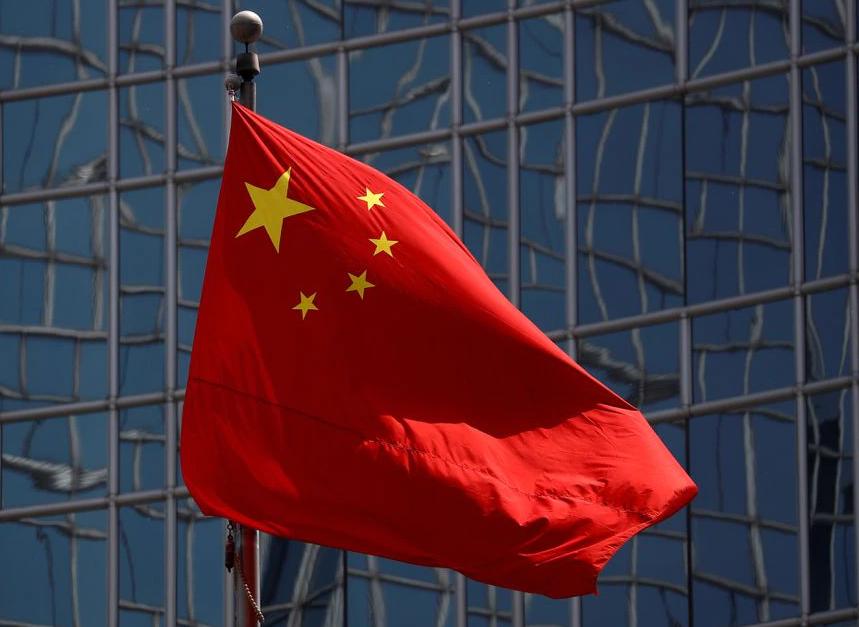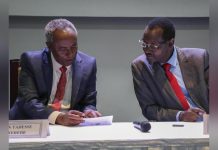Africa-Press-Ethiopia The current conflict in northern Ethiopia is a proxy confrontation between the United States and China, and Washington is on the losing side.
Ethiopia is at the heart of the Horn of Africa next to Djibouti — site of the first-ever military base in Africa established by the Chinese.
China also rebuilt the Djibouti-Addis Ababa railroad and added a modern metro system in Addis Ababa — a capital city of 5 million people — and helped create several new industrial enterprises.
Simply put, China is slowly taking over Africa, while the United States is alienating its friends.
The root of the present conflict could be traced to the Marxist regime that ended in 1991 when Addis Ababa was occupied by the Tigray Popular Liberation Front (TPLF) and the Eritrean Liberation Front. Two years later, Eritrea declared its independence and thus left the TPLF to rule the country alone.
The most numerous ethnic groups of Ethiopia are Amharic, that traditionally were the leaders of the country, and Oromo, that are increasingly part of the new leadership.
While the Amharic inhabitants are overwhelmingly Christians, Oromo are split between Christians and Muslims. The northern Tigray region of Ethiopia, where the present conflict started, is inhabited by people related to the Amharic, but antagonistic to Addis Ababa. And the Tigray population is only 7 million strong and is under the control of the powerful TPLF Front.
Between 1991 and 2018,TPLF governed Ethiopia with a heavy hand — abusing the people and neglecting the economy. Anti-governmental manifestations were brutally put down and many protesters were murdered.
It was in the middle of those years that I was a professor in Addis Ababa and witnessed some of those events. The Tigray domination ended in 2018 when Abiy Ahmed, an Oromo leader, was elected prime minister. He had the support of most people and launched a number of democratic reforms.
Most importantly, he reached a peace agreement with Eritrea. For his achievements in 2018, Abiy Ahmed was awarded the much-coveted Nobel Prize.
Since 2018, two important events have occurred that shook the delicate balance of co-existance. First, TPLF members abused their positions. That move upset the Tigray leaders who would not accept the loss of their privileges.
They first asked for greater autonomy for their region, and when Addis Ababa rejected the demand, they resorted to military insurrection and attacked an Ethiopian army base. Thus, the current civil war was triggered.
TPLF also fomented a local revolt against Addis Ababa, mobilized their forces and allies and threatened to occupy the capital as they had done in 1991. This time, however, the Ethiopian government gathered the support of the population to defeat the rebels.
Tragically, however, outside interference is causing again many victims, numerous refugees, and untold destruction. And the Tigray leaders could not do all the havoc by themselves. They were and still are instigated by foreign interests.
Ethiopia recently marked an important achievement: the completion of the Grand Renaissance Project, the biggest dam, water reservoir, and hydro-power plant in Africa.
Located on the Blue Nile River near the border with Sudan, the dam will help produce much-needed electricity, help irrigate more land, regulate the flow of the river, and promote economic and social development.
The project, however, is affecting the water flow of the Nile all the way to Egypt and that is alarming to Cairo.
Begun by the U.S., construction started in 2011. Filling the huge reservoir began in July 2020 and continues in spite of various Egyptian obstructions and threats.
The Blue Nile flows through Ethiopia and provides over 80% of all the water of the Nile. Egypt contributes nothing to the Nile’s flow, but it uses 75% of its water. Actually, 97% of all its fresh water comes from the river.
The first agreement dealing with the Blue Nile was initiated in 1929 under the guidance of Great Britain and gave Cairo overwhelming rights. A new agreement was concluded in 1956, which provided for the sharing of the Nile between Egypt and Sudan. The treaty was concluded without any regard to any other countries.
In 2010, before starting the Renaissance project, Ethiopia and the countries of the upper Nile negotiated a new agreement. But Sudan and Egypt refused to sign it.
Confronted with the imminent reality of the project, Egypt mobilized its allies and asked them to intervene and stop the project or at least postpone the filling of the reservoir. Cairo also turned to threats and eventually threatened to blow up the dam. There is no doubt that the current insurgency in Tigray has the support of Cairo and implicitly, of the United States.
For Cairo, the perspective of losing part of the Nile’s waters is now an existential threat. For Addis Ababa, the project is a national unifier that symbolizes a better future.
The conflict has reached the highest political levels in the world from Cairo to Jerusalem and from the United Nations to Washington. After exhausting all the diplomatic means to stop or delay the project, Egypt’s president declared that all military options are now on the table.
Meanwhile, Egypt acquired new bombers and missiles capable of blowing up the dam. Ethiopia did not budge and acquired new defense systems.
Trying to pressure Ethiopia to comply with Egypt’s demands, former Israeli Prime Minister Benjamin Netanyahu called President Donald Trump to intervene personally in the matter.
In September 2020, the United States suspended partially its economic aid to Ethiopia and urged Addis Ababa to negotiate with Cairo. In October 2020 President Trump also declared that the situation was very dangerous and added that Egypt might blow up the dam.
So far no catastrophe has happened, but the dispute is very risky. Rejected by the United States, Ethiopia has no one to turn to except China. And China is ready to oblige.






